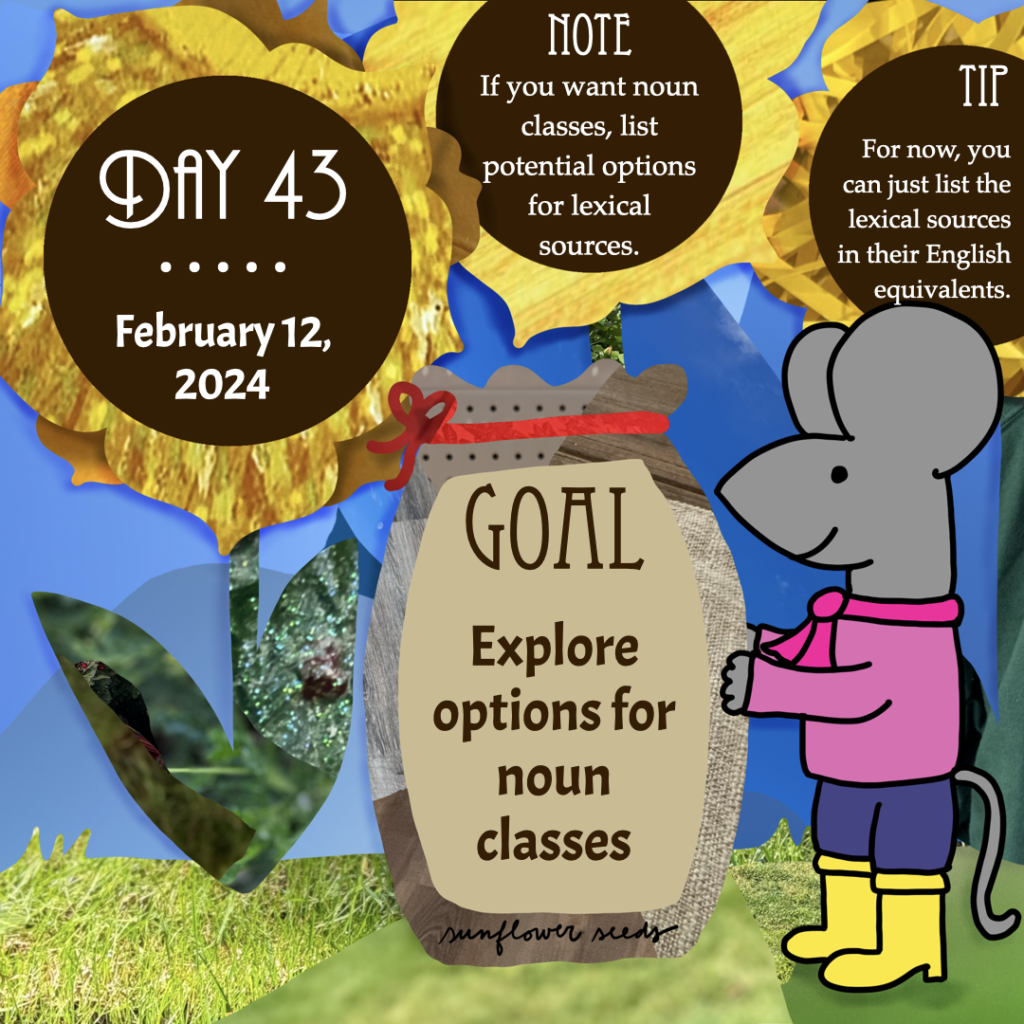
Goal: Explore options for noun classes
Note: If you want noun classes, list potential options for lexical sources.
Tip: For now, you can just list the lexical sources in their English equivalents.
Work focus: Brainstorm/Learn/Try
The next four days are focused on common ways nouns can be marked for grammatical information, whether that marking comes in the form of inflectional affixes, particles, adpositions, or word order. Although the prompts ask you to explore different options, none of them are required to be marked. That is, you can develop a full system without needing to incorporate all (or any!) of these grammatical categories. Where applicable, I will mention alternate strategies for indicating grammatical information that do not require nominal inflections.
Today’s area of exploration is whether you want to incorporate noun classes in your language. You don’t need to have noun classes at all, in which case, you can simply explore what other languages do just for fun and the sake of learning.
If you do want to create noun classes, you will also need to decide how many you want to create and what they will be. Some options you might consider include…
- animate, inanimate
- animate, food, tool, other
- masculine, feminine, neuter (I mention these gendered terms only because they are used to analyze many languages, and you may choose to apply the same labels—just remember that grammatical gender is not semantic gender)
- soft, hard, wet, dry, smooth, rough
Noun classes offer you a way to think about your conworld and the ways your speakers might categorize the nouns around them. Whatever system you want to create, you can implement. As long as you have a good way to keep track of them, you could create as few as two noun classes or as many noun classes as you can track and feasibly incorporate. (I advise you not to go overboard just for the sake of going overboard—make sure you have solid reasons for your classes!)
If you want to incorporate noun classes, you will also need to think about how you might want to mark nouns as belonging to their class. Oftentimes, these markers are affixed onto the noun root (e.g. a prefix or suffix), though you could also end up marking the information in other ways, such as a function word occurring alongside the noun.
The best way to create these forms is to use a process called grammaticalization. Grammaticalization is a process where a form of a full lexical item (e.g. a noun or verb) is phonologically reduced and semantically bleached to the point where it becomes a unit that expresses grammatical information rather than its original lexical meaning.
For instance, if you choose to have two classes, one animate and the other inanimate, you could use the words for “person” and “rock” as the two words that will be grammaticalized to become markers for these classes. These words are typically the most common noun fitting into the class (such as having “person” represent the animate class).
For now, you don’t need to actually do anything other than select what words you want to use for the markers—another prompt in five days will task you with actually creating the forms. Between now and then, you have some other decisions to make about how your nouns might be marked, which can affect the forms your noun class markers end up taking.
